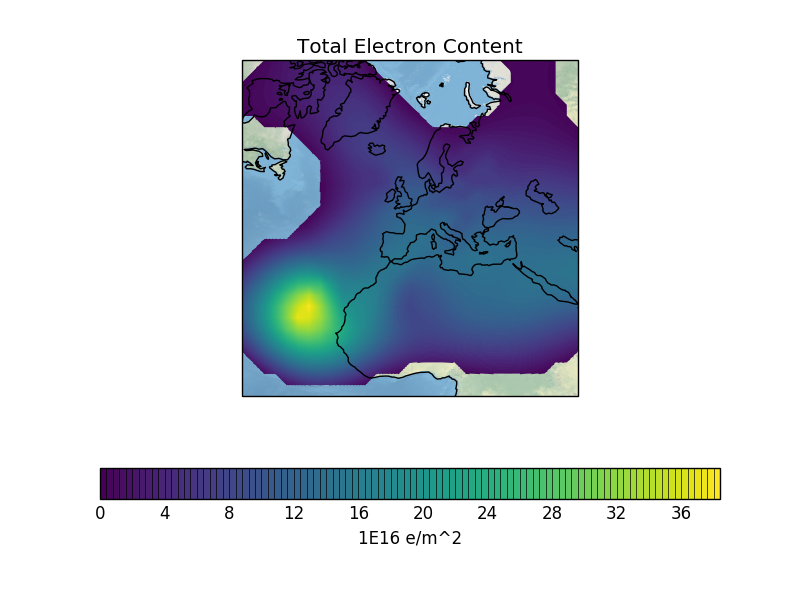This space weather example plots a filled contour of rotated pole point data with a shaded relief image underlay. The plot shows aggregated vertical electron content in the ionosphere.
The plot exhibits an interesting outline effect due to excluding data values below a certain threshold.
"""
Ionosphere space weather
========================
This space weather example plots a filled contour of rotated pole point
data with a shaded relief image underlay. The plot shows aggregated
vertical electron content in the ionosphere.
The plot exhibits an interesting outline effect due to excluding data
values below a certain threshold.
"""
import matplotlib.pyplot as plt
import numpy.ma as ma
import iris
import iris.plot as iplt
import iris.quickplot as qplt
def main():
# Enable a future option, to ensure that the netcdf load works the same way
# as in future Iris versions.
iris.FUTURE.netcdf_promote = True
# Load the "total electron content" cube.
filename = iris.sample_data_path('space_weather.nc')
cube = iris.load_cube(filename, 'total electron content')
# Explicitly mask negative electron content.
cube.data = ma.masked_less(cube.data, 0)
# Plot the cube using one hundred colour levels.
qplt.contourf(cube, 100)
plt.title('Total Electron Content')
plt.xlabel('longitude / degrees')
plt.ylabel('latitude / degrees')
plt.gca().stock_img()
plt.gca().coastlines()
iplt.show()
if __name__ == '__main__':
main()
(Source code, png)
